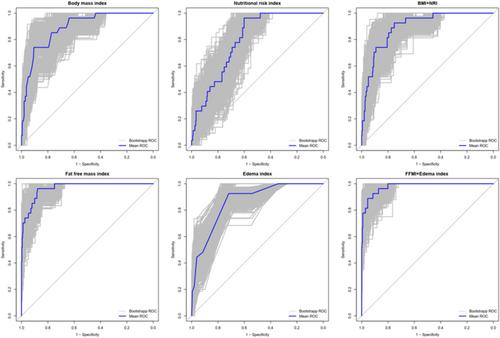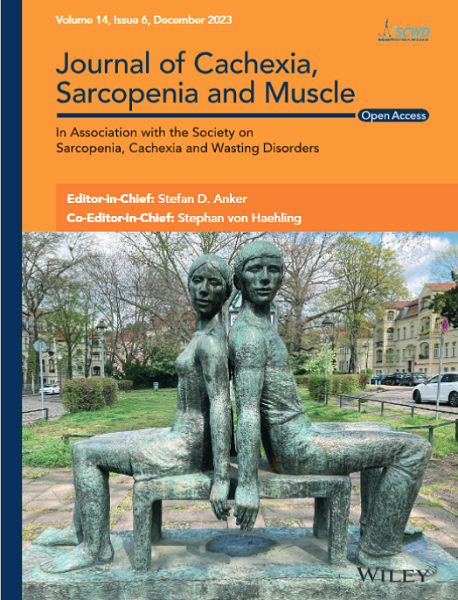Factors associated with skeletal muscle mass in middle-aged men living with HIV
Abstract
Background
Despite extensive research on muscle loss in people living with HIV (PLWH), the prevalence and contributing factors specifically among middle-aged men remain unclear. This study aimed to determine the prevalence of low muscle mass within this demographic and to identify associated factors.
Methods
A total of 378 men living with HIV were enrolled in the study. They were classified into low muscle mass group if they displayed a skeletal muscle index (SMI) <7.00 kg/m2 or fell within the lowest quintile of SMI based on the criteria established by the Asian Working Group for Sarcopenia 2019.
Results
Out of the 378 men living with HIV enrolled, 351 had normal muscle mass, while 27 (7.1%) had low muscle mass. Antiretroviral drugs Zidovudine (AZT) (OR = 0.246, P = 0.022) and higher serum albumin levels (OR = 0.899, P = 0.026) were found to be protective factors against low muscle mass according to quintile grouping. Strong positive associations between SMI and body mass index (BMI), nutritional risk index (NRI), oedema index and fat-free mass index (FFMI) (R > 0.5, P < 0.001) were observed. In addition, both BMI (sensitivity = 0.741, specificity = 0.906) and NRI (sensitivity = 0.963, specificity = 0.601) had high sensitivity and specificity in diagnosing low muscle mass, with critical values of 19.85 and 114.177 for BMI and NRI, respectively. The oedema index was the most effective measure of body composition in detecting abnormal fluid retention with high sensitivity (92.6%) and moderate specificity (71.8%) in identifying individuals with low muscle mass. Notably, PLWH with low muscle mass participants had a significantly higher prevalence (92.6%) of a high oedema index compared with those with normal muscle mass (28.2%). This observation indicates that individuals with HIV who experience reduced muscle mass is commonly accompanied with abnormal fluid retention within the body.
Conclusions
Antiretroviral medication types, specifically Zidovudine, BMI and NRI can be independent risk factors for low muscle mass in men with HIV. These factors, along with BMI, could be used conveniently to predict low muscle mass. Furthermore, the association between the oedema index and muscle mass suggests that observing signs of oedema may indicate a risk of low muscle mass in PLWH.


 求助内容:
求助内容: 应助结果提醒方式:
应助结果提醒方式:


